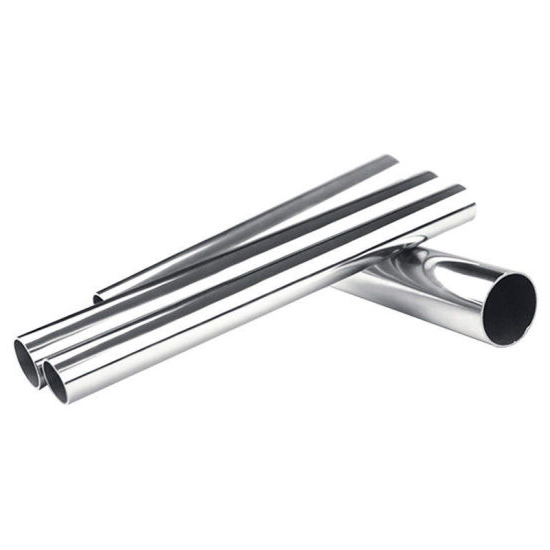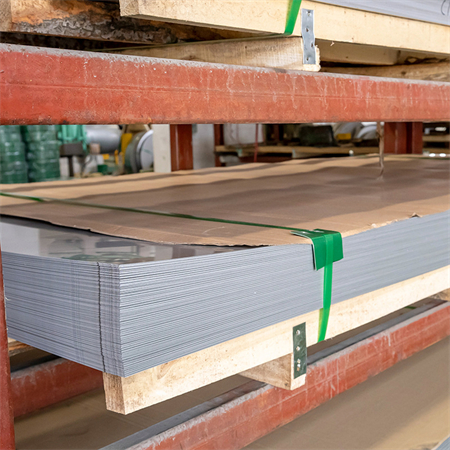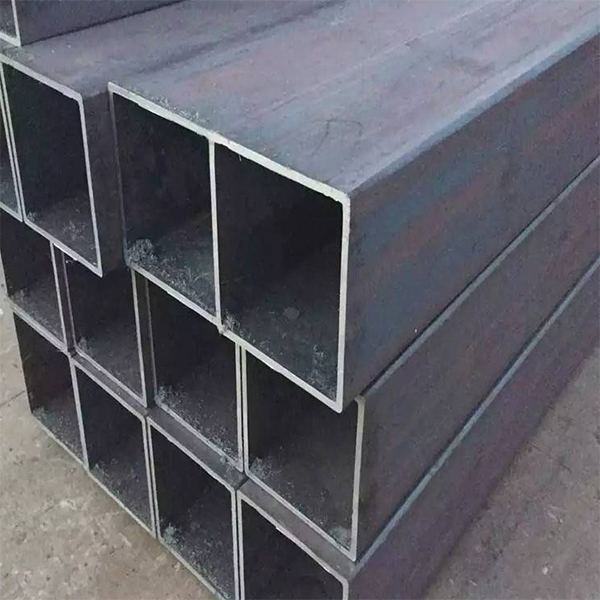304 Stainless Steel Seamless Pipe
A typical application of 304 stainless steel pipe is its use in heat exchangers. A heat exchanger is a system for transferring heat between two or more fluids and SS 304 welded tubes are more commonly used in heat exchangers since they are an economically viable option. While heat exchangers require moderate corrosion resistance and good tensile strength as key properties, the versatile SS 304 efw pipes can meet their needs without causing any loss in the buyer's pocket. Also, stainless steel 304 erw tubes perform these functions quite efficiently.
Hence, ASTM A312 tp 304 Seamless Tubing is a popular choice in various industrial sectors such as power stations, chemical plants, refrigeration, air conditioning, petrochemical plants as well as oil refineries. ASTM A312 specified Aisi 304 pipe is designed keeping in mind its use in applications involving not only high-temperature conditions but also general corrosive applications. Most Trusted SS 304 Pipe Supplier
ASME SA312 Grade 304 pipe is usually cold-worked to permanently alter the crystal structure of the alloy by imparting mechanical strength. This in turn leads to an increase in the tensile strength properties of SS 304 Seamless Pipe and this is also without the use of heat.
Mechanical properties of
(1) Tensile strength (σb) : the maximum force (Fb) of the specimen during tensile fracture is divided by the stress (σ) of the original cross-sectional area (So) of the specimen. The unit of tensile strength (σb) is N/mm2 (MPa). It represents the maximum capacity of a metal material to resist damage under tension. Where: Fb-- the maximum force borne by the specimen when it breaks, N (Newton);So-- Original cross-sectional area of the sample, mm2.
(2) Yield point (σ S) : the yield point of a metal material with a yield phenomenon. It is the stress at which the specimen can continue to stretch without increasing the force (keeping constant) during tensile process. In case of force decline, upper and lower yield points should be distinguished. The unit of yield point is NF/mm2 (MPa). The upper yield point (σ SU) is the maximum stress before the specimen yields and the force drops for the first time. Lower yield point (σ SL) : the minimum stress in the yield stage when the initial transient effect is not considered. Where Fs is the yield force (constant) of the specimen during tensile process, N (Newton) So is the original cross-sectional area of the specimen, mm2.
(3) Elongation after fracture :(σ) in tensile test, the elongation is the percentage of the length increased by the standard distance of the specimen after fracture compared with the length of the original standard distance. The unit is %. Where: L1-- the distance of the specimen after breaking, mm; L0-- Original distance length of sample, mm.
(4) Reduction of section :(ψ) in tensile test, the percentage of the maximum reduction of the cross-sectional area at the reduced diameter of the specimen after being pulled and the original cross-sectional area is called reduction of section. ψ is expressed in %. Where, S0-- the original cross-sectional area of the sample, mm2; S1-- The minimum cross-sectional area at the reduced diameter of the specimen after breaking, mm2.
(5) Hardness index: the ability of metal materials to resist hard objects to indent the surface, known as hardness. According to the test method and scope of application, hardness can be divided into Brinell hardness, Rockwell hardness, Vickers hardness, Shore hardness, micro hardness and high temperature hardness. Commonly used to pipe material have brinell, rockwell, Vickers hardness 3 kinds.
(6) Brinell hardness (HB) : with a certain diameter of steel ball or hard alloy ball, with the specified test force (F) pressed into the sample surface, after the specified hold time to remove the test force, measurement of the sample surface indentation diameter (L). The Brinell hardness number is the quotient of the test force divided by the surface area of the indentation sphere. Expressed in HBS, the unit is N/mm2(MPa).
Mechanical properties of galvanized steel pipe,Cleaning method
1. the first use of solvent cleaning steel surface, the surface of the organic matter removal,
2. then use tools to remove rust (wire brush), remove loose or tilt scale, rust, welding slag, etc.,
3. the use of pickling.
Galvanized is divided into hot plating and cold plating, hot plating is not easy to rust, cold plating is easy to rust.
Steel Pipe Connection
(1) Groove weld cracking
1, the pipe mouth pressure groove part of the inner wall welding bar grinding smooth, reduce groove rolling resistance.
2. Adjust the axis of steel pipe and groove rolling equipment, and require the level of steel pipe and groove rolling equipment.
3, adjust the speed of the pressure tank, the molding time of the pressure tank can not exceed the provisions, uniform and slow force.
(2) Rolling channel steel pipe fracture
1. Smooth the welding ribs on the inner wall of the pressure groove at the steel pipe mouth to reduce the resistance of groove rolling.
2. Adjust the axis of steel pipe and groove rolling equipment, and require the level of steel pipe and groove rolling equipment.
3, adjust the pressure tank speed, pressure tank speed can not exceed the provisions, uniform and slow force.
4. Check the width and type of the support roller and the pressure roller of the groove equipment to see if the two rollers do not match each other in size and cause the occlusal phenomenon.
5. Check whether the groove of steel pipe is specified with vernier caliper.
(3) Groove rolling molding machine should meet the following requirements
1. The surface from the pipe end to the groove shall be smooth and free from concave-convex and rolling marks.
2. The center of the groove should be concentric with the pipe wall, the width and depth of the groove should meet the requirements, and check whether the clamp type is correct.
3. Apply lubricant on the rubber sealing ring and check whether the rubber sealing ring is damaged. Oil lubricant shall not be used for lubricant.








